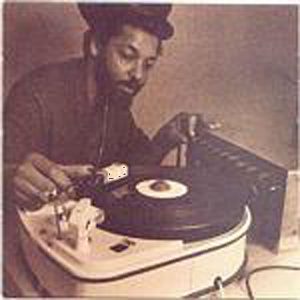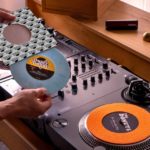
I feel lucky to have been a DJ way before digital. I can happily whip a tune out of a box, throw it on a turntable, mix it in without using headphones, and (apart from the first beat or two), get it beatmatched straight away. The thing is, I’m really nothing special – all DJs who’ve ever DJed professionally with vinyl can do this. To DJs like me, it’s like riding a bike; if you do it often enough, you’ll never forget. But do you still need the skill if you’re a digital DJ?
Some people say “no”. Not when software can beatmatch music for you, and algorithms can show you your music in so many different ways. (I love Serato ITCH, for instance, and its three waveforms, all of which are great fun for visual DJing, or waveriding.)
But many still say “yes”. One of the most frequent things I hear from young digital DJs is “I want to learn to do it properly”. and I think they’re right. Here are some of the reasons why:
1. BPM counters don’t always work – This is the big one. BPM counters are not always accurate. Some songs just don’t get auto BPMed well by software. Others vary in tempo half-way through. Others are played by live drummers and have natural drifts of tempo. Others are just plain weird and the BPM counter can’t do anything with them.
A good DJ, though, can try and mix anything with anything. How good is YOUR DJ software at BPMing indie, for instance? Not very good, I’d say. Accapellas? Nope. So you need to be able to beatmix because you can’t be relying on machines all the way through your DJ career. You WILL get caught out one day.
2. You never know what kit you’re going to be asked to DJ on – What if someone asks you to play a DJ set on vinyl or CDJs and you only use your controller with “autosync”? What if you want to use someone else’s kit? What if you are asked to DJ at a party, or your gear breaks down, or someone is just testing you to see if you can do it? Would you want to say “I can’t”?

3. It teaches you about the BPMs of different types of music – You could learn by studying your BPMs and listing those of your favourite genres, and of course with digital gear you can ultimately mix anything into anything (especially with modern timestretching features), but actually DJing with straight tracks, no timestretching, right out of the box (or “virtual box” in the case of us digital jocks) is the real deal.
So if you want to know how much tunes can be sped up or slowed down before they sound rubbish; how quickly you can get from one BPM to another without your crowd noticing; tricks like going from dubstep to drum and bass (or techno to chillout) by doubling (or halving) the BPM; how going from straight 4/4 (eg house) to breakbeat can feel “slower” even though the BPM stays the same… if you want to learn any of these things properly for yourself, you need to experiment with mixing tunes using your ears, not your eyes.
4. It teaches you about how rhythms are constructed – To manually beatmatch a tune over another, you have to listen to its rhythm, which I define here as “any bit that repeats over and over”.
You latch on to a hi-hat, or a cymbal, or a handclap. You hear a distinctive kick drum. You notice that a synth stab is adding percussion. By identifying sounds in rhythm, you become a better listener to music. DJs need to hear things others don’t – how can you surprise your listeners with great, intuitive mixes, leaps of genre and other little nods to this or that otherwise?
5. It’s one of the cornerstones of DJing – I said the first point, but on second thoughts I feel that actually this point is the big one. Accountants use spreadsheets, right? But they learn to use calculators first. And they learn to add up, subtract, multiply and divide in their heads before they are even allowed to do so on paper, way before all of that!

“Doing your dues”, and learning the trade from the bottom up, really should matter to you. It means you can take advantage of all the gifts digital DJing has to offer, while knowing you’ve got the basics mastered. It means you can walk before you can run. And once you can beatmatch by ear as well as by sight, you’ve got more time to enjoy yourself, interact with the crowd, and generally be more confident behind the decks. You’ve earned it.
Do a bit a day…
So you do need to be able to beatmatch two tracks by ear. However you teach yourself – whether by using a friend’s turntables, or using CDs and covering the BPM counters, or putting masking tape on parts of your laptop screen to cover your DJ software’s waveforms and BPMs, try to do so.
If you learn this skill (and although it’s tricky at first, it gets easier and easier), you’ll set yourself up for enjoying the best of the old and the new ways of mixing your tunes together – whatever they are.
How important is it for you to mix by ear? Are you an old vinyl DJ who can’t stand it when people don’t learn? Or do you think it really doesn’t matter? Tell us!








